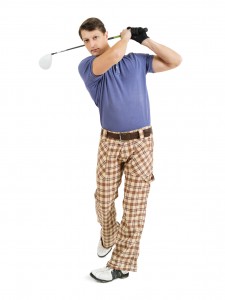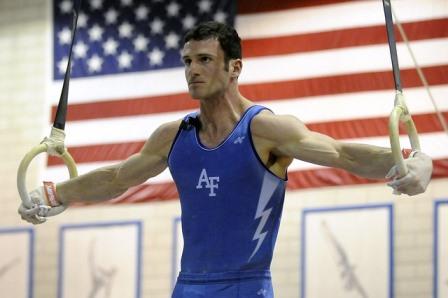- Calls to this hotline are currently being directed to Within Health, Fay or Eating Disorder Solutions
- Representatives are standing by 24/7 to help answer your questions
- All calls are confidential and HIPAA compliant
- There is no obligation or cost to call
- Eating Disorder Hope does not receive any commissions or fees dependent upon which provider you select
- Additional treatment providers are located on our directory or samhsa.gov
Male Athletes and Anorexia
Male Anorexia is Real
Much has been made about the female “athletic triad” of disordered eating, menstrual disorders and osteoporosis1, but what about men who engage in sporting activity – are they susceptible to eating disorders too like Male Anorexia?
What do we generally consider to be an eating disorder?
If they have a disorder, what are the risk factors, and how should they be treated?
Risk Factors For Male Anorexia
Studies show that males account for 5-10% of cases of anorexia2. Interestingly, 45% of males with anorexia are involved in “an occupation or athletic team in which control of weight is important for good performance”, compared with only 9% of females with anorexia2.
This suggests that engagement in sport is a significant risk factor for eating disorders in males. Further research reveals that certain sports carry more risk than others3.
-
- Male athletes who participate in activities where aesthetics are judged – such as figure skating or diving – are more likely to be preoccupied with appearance and have a higher risk of anorexia.
- Male athletes who have to “make weight” for competition, such as boxers or rowers, are more likely to engage in disordered eating behaviours such as extreme food and fluid restriction, or going for “sweat runs” wearing many layers of clothing. Male jockeys are renowned for their strange eating behaviour, with 69% skipping meals, 30% inducing vomiting and 14% abusing laxatives, whilst some have died from cardiac complications after taking appetite suppressants3.
- Male athletes who take part in sports where low body fat is advantageous, including distance running, are more likely to be anorexic3.

Indeed, startling similarities have been found between a cohort of distance runners and of females with anorexia, including high self-expectations, tolerance of physical discomfort, preoccupation with food, emphasis on lean body mass and even family and socioeconomic background4.
On the other hand, participation in some sports seems to be protective: adolescent swimmers were at no greater risk of eating disordered behaviour than the general population5, whilst one study found that male body-builders were not more likely to have eating disorders than controls6.
What Makes Male Athletes More Susceptible
Clearly, even within high-risk sports, not every male athlete develops anorexia, so what makes some more susceptible than others? One research group showed that, in sports, eating psychopathology results from the interaction of interpersonal difficulties, low self-esteem, high levels of self-critical perfectionism and depressive symptoms7.
They found no difference in these factors across sports type, performance standard or – importantly – between males and females, although it has been suggested that depression plays a greater role in males than in females3.
Recently, is has been shown that male physical education students with disordered eating are more likely to have lower levels of “emotional intelligence” than their peers, and that they tend to use avoidance- and emotion-oriented coping skills8.
Male athletes with eating disorders also perceive more pressure to be thin from television and magazines, and experience higher levels of stress than their healthy counterparts9. It should be noted that most male athletes with eating disorders experience this media pressure as directed towards muscularity rather than low weight per se9,10.
Male athletes susceptible to developing anorexia may feel more inclined to work toward achieving a certain body type that is deemed as “acceptable” by cultural standards. This can be lead to the development of abnormal eating and exercise behaviors.
A Late Diagnosis for Anorexia
Despite all of this research supporting the relatively high prevalence of eating disorders amongst male athletes, diagnosis is often late11. This is likely to be due in part to the fact that anorexia and bulimia are seen as ‘female problems’, leading to a perception of stigma around men who suffer, and partly because medical complications occur later in men, who can physically sustain significantly lower levels of body fat than women3.

In many situations, an athlete’s training regime, although extreme, may be justified in the name of the sport and unquestioned by those who interact with the athlete, such as coaches, teachers, family members and friends. Extreme training and rigid workouts are often applauded and praised as athletic discipline, and eating disorder behaviors can easily go undetected for a significant length of time.
Many male athletes who develop an eating disorder, like anorexia, often continue to perform and even compete well before the illness is identified. Unfortunately, some athletes may suffer severe consequences related to untreated anorexia before the severity of the illness is realized.
It has also been suggested that coaches are complicit in male disordered eating behaviours because they are seen as par for the course in certain sports3. Of course, early intervention leads to better outcomes, which means that there is much room for improvement in identification of cases within the male athletic community2.
Proper Treatment Guidelines
Psychiatric involvement in any sporting team is important because of the pressures of performance and it helps to normalise any intervention that has to occur in the context of an eating disorder3 There are a number of specialized treatments to help athletes with eating disorders.
If disordered eating is identified in a male athlete, the first step which should be taken is to instigate psycho-education for the athlete and also for the coach or trainer, emphasizing the importance of health over performance, not least because poor health inevitably leads to declining performance3.
Not Jumping the Gun on Stopping Training
Abnormal eating behavior in and of itself is not an indicator to prevent the athlete from training or competing; however, if there is medical or psychiatric compromise, he should be counselled to abstain until he regains stability. In some cases it may be appropriate for an athlete to be advised to change competition category (as defined by weight), or to change to a sport more suited to his body type3.

Making the decision about potentially breaking from training or even taking a leave of absence from a sport can be difficult and overwhelming for an athlete. It is important that this decision is made collaboratively with all involved treatment professionals in order to help support the best possible scenario for the recovering athlete.
While taking a leave of absence is sometimes necessary, this may be the most effective method for allowing the body to completely heal from any damage that might have been caused by the anorexia. A leave of absence from a sport is often temporarily, and many athletes are often able to return to their sport once healed and stabilized from the eating disorder.
As with eating disorders in females, a multidisciplinary approach to treatment is essential, and Engel’s bio-psycho-social model is seen to be appropriate3. Where males are concerned, the involvement of a psychiatrist is particularly important due to an increased incidence of co-morbid depression and substance abuse3.
Differences Between Men’s Treatment and Women’s Treatment
Seeking gender-specific treatment will help address many of the unique issues and challenges that male athletes may face when receiving care for anorexia.
The psychiatrist should be empathetic towards the athletic psyche, understanding that continued involvement in sport may be highly important to the athlete’s self-esteem3. He should also be sensitive to the fact that some commonly-used medications may be banned in certain sports.
A sports dietitian is crucial to assessing need for restoration of weight and metabolic balance and implementing a nutritional plan, whilst psychotherapy is important in identifying and addressing contributory factors.
It has been suggested that individual therapy is needed, and that ‘family’ therapy should include team-mates, coaches and trainers because of the close-knit nature of the sports community3.
Hope For Success
Recovery is possible for male athletes. While many male athletes may continue to struggle with the stigmas that surround men and anorexia, it is critical to reach out for help in order to begin the healing process.
Many male athletes may feel that they are able to continue in their sport, but postponing care and treatment will only increase risk of further damage created by anorexia. With comprehensive care and specialized treatment, male athletes who are struggling with anorexia may have an improved prognosis and chance for better quality of life.
In summary, male athletes are at risk of to eating disorders such as anorexia; certain sports may predispose participants to developing disordered eating; some men are more susceptible than others; a comprehensive treatment plan is essential; and there is hope for sufferers because – with the right help – recovery is possible.
Article contributed by Sharon McConville, MB, BCh, BAO
References:
[1]: Birch, K: Female athlete triad. British Medical Journal 2005;330:244[2]: Braun, DL et al: More males seek treatment for eating disorders. International Journal of Eating Disorders 1999;25:415-424
[3]: Baum, A: Eating disorders in the male athlete. Sports Medicine 2006;36(1):1-6
[4]: Yates, A et al: Running – an analogue of anorexia? New England Journal of Medicine 1983;308:251-255
[5]: Taub, DE and Benson, RA: Research Note: Weight concerns, weight control techniques and eating disorders among adolescent competitive swimmers: the effect of gender. Sociology of Sport Journal 9(1)
[6]: Anderson, SL et al: Comparison of eating disorder index (EDI-2) scores of male bodybuilders to the male college student subgroup. International Journal of Sports Nutrition and Exercise Metabolism 6(3):255-262
[7]: Shanmugam V et al: Application of the transdiagnostic cognition-behavioural model of eating disorders to the athletic population. Journal of Clinical Sport Psychology 5(2)
[8]: Filaire E et al: Relationship between eating disorder behaviours and psychological parameters in male first-year physical education students. International Journal of Sports Nutrition and Exercise Metabolism 2012;22(5):383-391 .
[9]: Petrie TA et al: Eating Disorders: Psychosocial correlates of disordered eating among male collegiate athletes. Journal of Clinical Sport Psychology 1(4)
[10]: Fernandez-Aranda, F et al: Personality and psychopathological traits of males with an eating disorder. European Eating Disorders Review 2004;12:376-374
[11]: Lindblad, F et al: Anorexia in young men: a cohort study. International Journal of Eating Disorders 2006;39:662-666
[12]: Men’s Health http://www.menshealth.co.uk/healthy/addictions/anorexia-in-men-34344 Accessed May 9th, 2013
The opinions and views of our guest contributors are shared to provide a broad perspective of eating disorders. These are not necessarily the views of Eating Disorder Hope, but an effort to offer discussion of various issues by different concerned individuals.
We at Eating Disorder Hope understand that eating disorders result from a combination of environmental and genetic factors. If you or a loved one are suffering from an eating disorder, please know that there is hope for you, and seek immediate professional help.
Updated By: Crystal Karges, MS, RDN, IBCLC on August 14, 2017.
Reviewed By: Jacquelyn Ekern, MS, LPC on August 14, 2017.
Published on EatingDisorderHope.com

